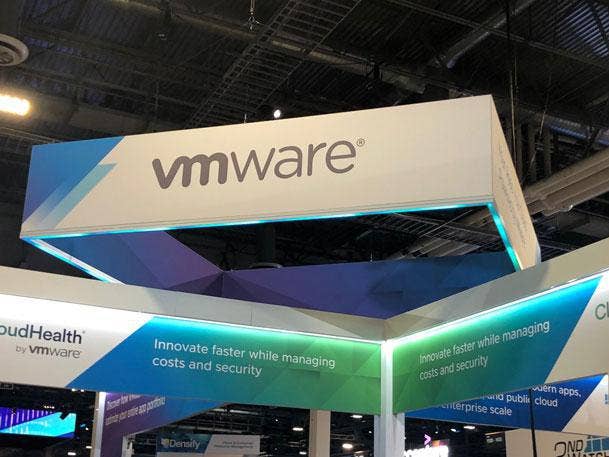VMware’s Partner Connect Program Now Honed By “Thousands” Of Successes
“Our strategy hasn’t changed. Our commitment to our partners hasn’t changed. Everything we committed to is exactly what we are executing on right now,” Tracy-Ann Palmer, VMware’s vice president of partner experience, programs and investments, told CRN . “And we are very confident that we’re doing the right things for our partners.”

If victory has a thousand fathers, as the saying goes, VMware is putting all of them to work in the latest iteration of Partner Connect, the company’s reseller program, which has distilled from VMware’s top earners the three areas of focus partners can use to maximize software-as-a-service sales growth .
‘The program we are launching is a culmination of bringing all of this together,” Tracy-Ann Palmer, VMware’s vice president of partner experience, programs and investments, told CRN.
The Palo Alto, Calif-based company’s 28,000 partners increased the year-over-year growth of VMware’s SaaS business by 30-percent, Palmer said. Additionally, over the last 12 months VMware has pivoted 60 percent of its partner incentives away from perpetual licenses and towards SaaS.
[RELATED: Google Cloud Hires Former Nutanix, VMware, Pure Storage Exec]
The partner program changes could not come at a better time for VMware’s business. The company is in the midst of a $61 billion takeover by chip-maker giant Broadcom. Broadcom CEO, Hock Tan, singled out the need to move more VMware customers into subscription licenses in his first comments on the proposed deal back in May.
“(W)e want to make it very consistent with the way we run the model. And based on this, we are, in a sense, restructuring the contracts, perpetual to subscription,” Tan told investors on May 26. “That’s why, depending on where you see it, you’ll see a slower growth at the beginning, if any, followed by a more rapid growth as we convert more to subscription.”
The changes to the program are in line with Tan’s stated goals for the software business, as well as VMware’s goal, which is to push more VMware customers into subscription licenses.
However, whether the changes will remain in place following the looming Broadcom takeover remains to be seen.
“We’ve been telling our ecosystem for the last 12 months we are on this journey,” Palmer said. “We’re committed. We’re launching. The big launch will happen in March. We are an independent company right now. Our strategy hasn’t changed. Our commitment to our partners hasn’t changed. Everything we committed to is exactly what we are executing on right now. And we are very confident that we’re doing the right things for our partners.”
Asked if Broadcom was aware of the changes and supportive, Palmer added, ‘They are and they will be even more so going forward, but I think everything we’ve heard is very positive around our channel, from a Broadcom perspective. I think Broadcom has communicated that they’re very interested in learning more.”
To that end, VMware said it has identified three areas which show up among thousands of its most profitable partners, that it wants all to now focus on: services, life cycle profits, and stickiness.
“Our most profitable partners are doing three things differently,” Palmer said. “They are driving and selling advance complex services. They are focusing on the entire life cycle of the customer. Robust customer success, methodologies, frameworks, organization in place and driving it, right through from resale all the way through. If you talk to any of our top partners, they will tell you it is that continuum that is driving their margins. The third piece is the stickiness.”
The program refresh is also bringing changes to how partners increase incentives. It is doing away with tier credits and incorporating a point system to streamline how it ranks partners, which can also be useful to orient a partner’s business model around growing its VMware business into areas with higher profitability for the reseller.
“Tier credits used to only focus on performance,” Palmer said. “The point system will focus on capability and performance.”
Partner Connect is now defined by four business models: solution services, solution builder, cloud solution provider, and solution reseller.
“When you are thinking about our partners, what could be most valuable to them, how do they monetize their business?” Palmer said. “Where are they driving the most profitability and how do we truly build a healthy eco system with our partners, and one that they would actually embrace.”
She said when partners push their businesses into the advanced solutions arena, they can see margins above 50 percent, whereas the typical resale is between 5 and 50 percent, she said, numbers that she said have been validated by partners.
‘No partner has one route to market,” Palmer said. “They’re playing in different markets. No partner has one business model. Some of them, they are resellers and services and some of them are dipping their toes into being MSPs, so they’re building they’re own IP.”
Critical to all of the changes is catering to the profile of their partner. Palmer said VMware’s four-year-old program Ignite -- a business practice development course that grows a partner’s capabilities across technical, sales, service, and marketing functions – will now be available for all partners.
Visibility and data into how partners are progressing through the tiers will be available in March through a dashboard, which will allow partners to self-service with real-time data.
“We’re moving from an IT Pathways and tier credit model to a complete use-case solutions business model focus,” she said. ‘Its all about the solutions and it’s all about the use cases.”